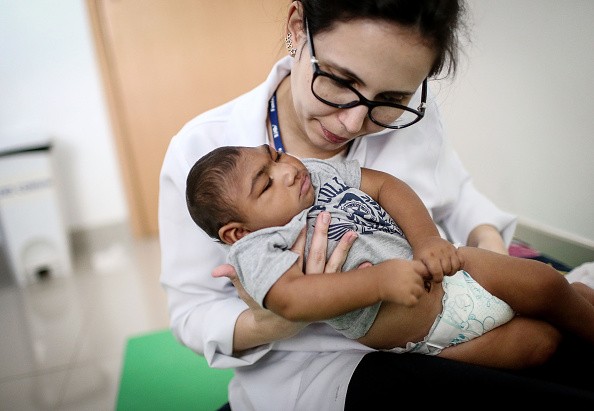The brain defects in infants have doubled in Brazil after the Zika virus epidemic emerged in 2014. The cases of microcephaly have increased two-fold following the Zika virus outbreak in Brazil as confirmed by Centers for Disease Control and Prevention.
The data results were published in the Centers for Disease Control and Prevention journal Emerging Infectious Diseases. The increase in rate of hospitalizations due to cases of congenital brain defects such as encephalomyelitis, myelitis and encephalitis began in the middle of 2014, a time when the Zika virus was introduced in the country, Fox News reported
The theory being held on is that the occurrence of drought from 2010 to 2013 which led to food shortages, potable drinking water contamination and the diarrhea epidemic in Brazil could have led the citizens to be vulnerably affected by the Zika virus after its outbreak.
The Zika virus has been linked with the birth defect microcephaly. The brain defect such as microcephaly is an abnormal smallness of the head. Microcephaly is a congenital condition linked and associated with incomplete brain development. The scenarios in Brazil are heart wrenching according to CNN. Following the Zika infection attacks during pregnancies, multitude of babies have been born with brain defects and small heads.
Following the Zika infection epidemic, researchers of Oswaldo Cruz Foundation in Brazil studied the data of the rare, unusual and potentially lethal inflammations of the spinal cord and the brain like encephalomyelitis, encephalitis, and myelitis; together with Guillain-Barré syndrome which is a disease wherein the immune system of the body attacks and fights its own nerve cells that is causing paralysis, pain and worst, death.
The Zika virus is a part of the Flaviviridae family and the Zika infection is transmitted by mosquitoes to humans. Zika virus is a member of the clan of pathogenic vector flaviviruses such as West-Nile, Japanese encephalitis viruses, and dengue but the Zika virus is producing a comparatively mild disease in people.
The Zika virus is spread by Aedes mosquitoes like Aedes albopictus and Aedes aegypti that are active during the daytime. Symptoms of the Zika virus include skin rash, mild fever, joint and muscle pain, conjunctivitis, headache or malaise. The Zika infection can also be sexually transmitted.
This video tells why microcephaly hits Brazil the hardest:




























